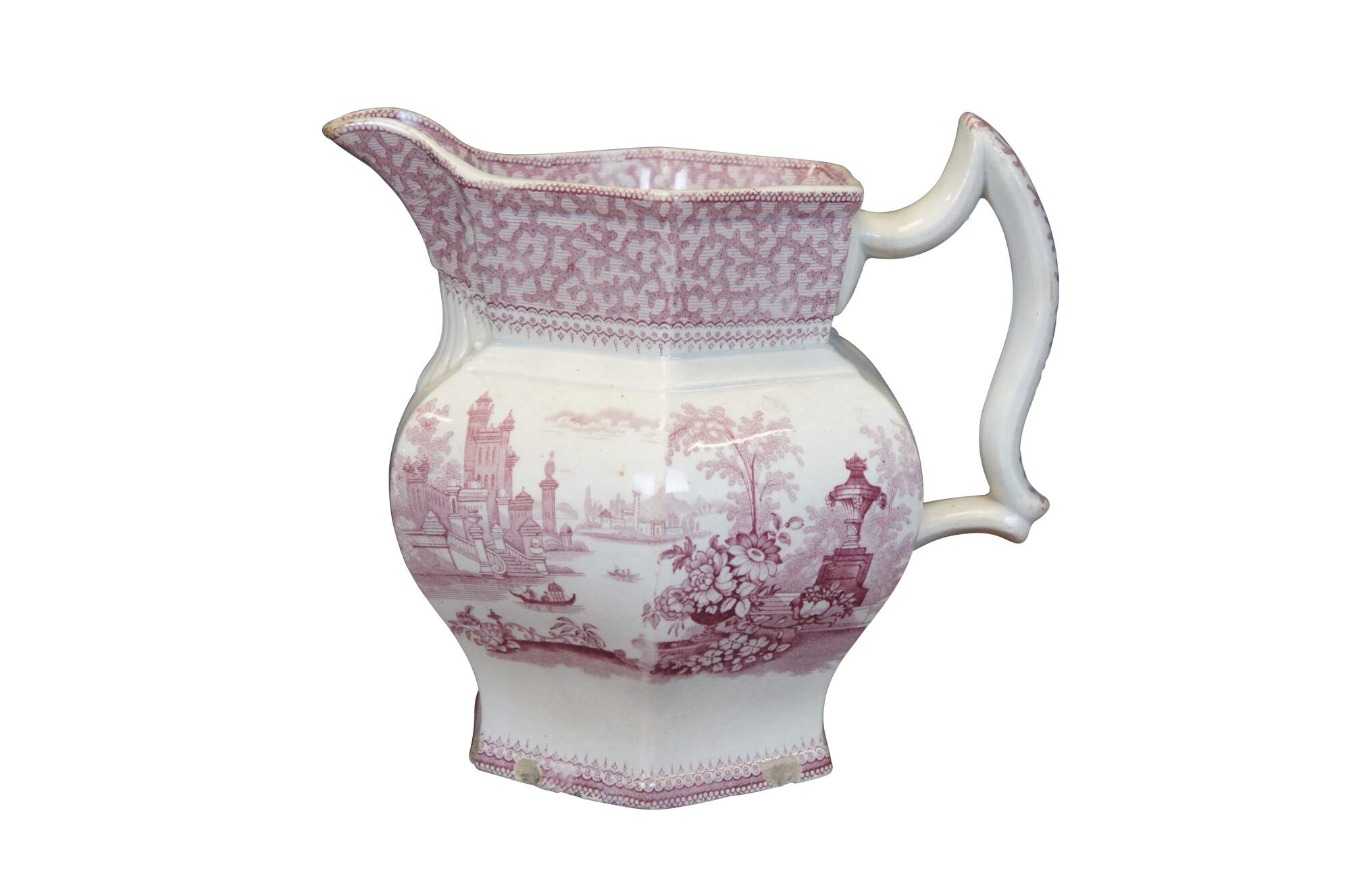
Shipping:
Free Shipping Included
Delivery:
Estimated 2-15 Business Days
Payments:
Credit Card, Check, Cash, PayPal, Apple Pay, Venmo
Returns:
30 Days 100% Money Back Guarantee, Buyer Pays Return Shipping
Description
Circa 1830s-1840's red transferware ironstone porcelain pitcher by George Phillips in the Marino pattern. Faceted body with molded scallop shell at the base of the spout, pattern features a landscape of fanciful buildings at the edge of a river, framed with a foreground of stone vases and flowers, with a wide border around the rim and on the handle depicting branches of coral.
"The pottery was founded by two brothers, Edward and George Phillips, in 1822. Their father was a merchant in Newcastle under Lyme, and no one in the family seems to have had a pottery background. Edward, however, married Benedicta Wedgwood, who had become a ward of Josiah Wedgwood after the death of her father, Thomas, of the Overhouse Works. The brothers leased the New Bridge pottery in Longport, also known as the Bottom Bridge Works, from Joseph Brindley. The early transfer printed wares were often poorly executed, in a muddy blue. The most common of these are dinner wares printed with Pastoral Scene. The only historical American pattern attributed to Phillips, Franklin’s Tomb on tea ware, has many of the same characteristics. Three slightly different printed marks were used at this time. All incorporate the firm’s name, E & G Phillips (no punctuation marks) and the location, Longport. A rampant lion and a Staffordshire knot were added to some marks, and this may be one of the earliest uses of the knot by a Staffordshire pottery. Some Pastoral Scene plates have an impressed mark as well, with PHILLIPS above and LONGPORT below a knot. A second impressed mark, PHILLIPS in a straight line over LONGPORT, appears occasionally on other ware. The most commonly found Phillips earthenwares in the United States are romantic scenes printed in a variety of colors on dinner ware. James Edwards, who had been a thrower and plant manager for Rogers, joined the Phillips staff, and may have been responsible for the dramatic improvement in quality shown in these later pieces. Tragedy struck the firm in 1831 when Edward was killed in a carriage accident, just before a planned trip to the United States. His widow sold her interest in the pottery to the surviving brother, George, in 1834, and the marks changed to G. PHILLIPS. In 1845 and 1846, George Phillips registered nine designs for ironstone shapes and printed patterns with the British Patent Office, an impressive number for any contemporary manufacturer. Although production ceased at his death in 1847, enormous quantities of Phillips ironstone exist from those few years, and a few of the registered designs were reissued by other firms. In 1848 all the furnishings, equipment, and stock in the pottery were auctioned. The works became part of the Davenport firm and remained in its possession until the 1870’s." (Source: Transferware Collector's Club)
Condition
Fair antique condition, chipping to base, crazing, staining, wear.
Dimensions
9" x 7.5" x 8" (Width x Depth x Height)